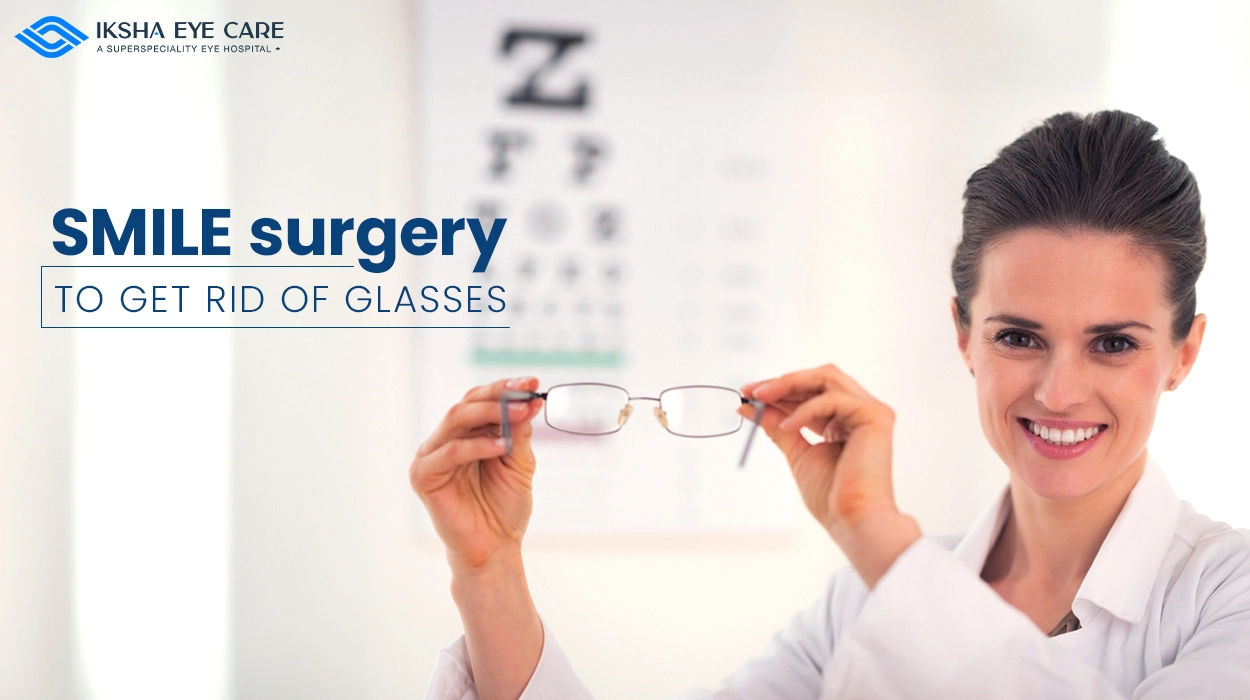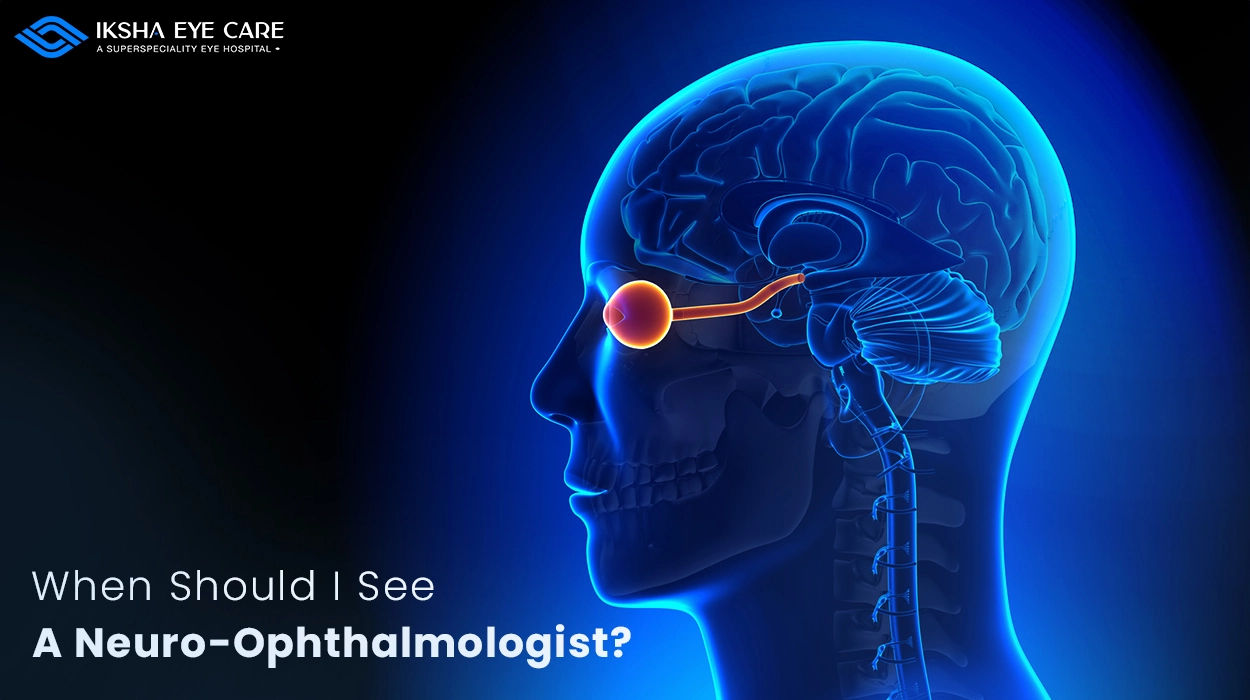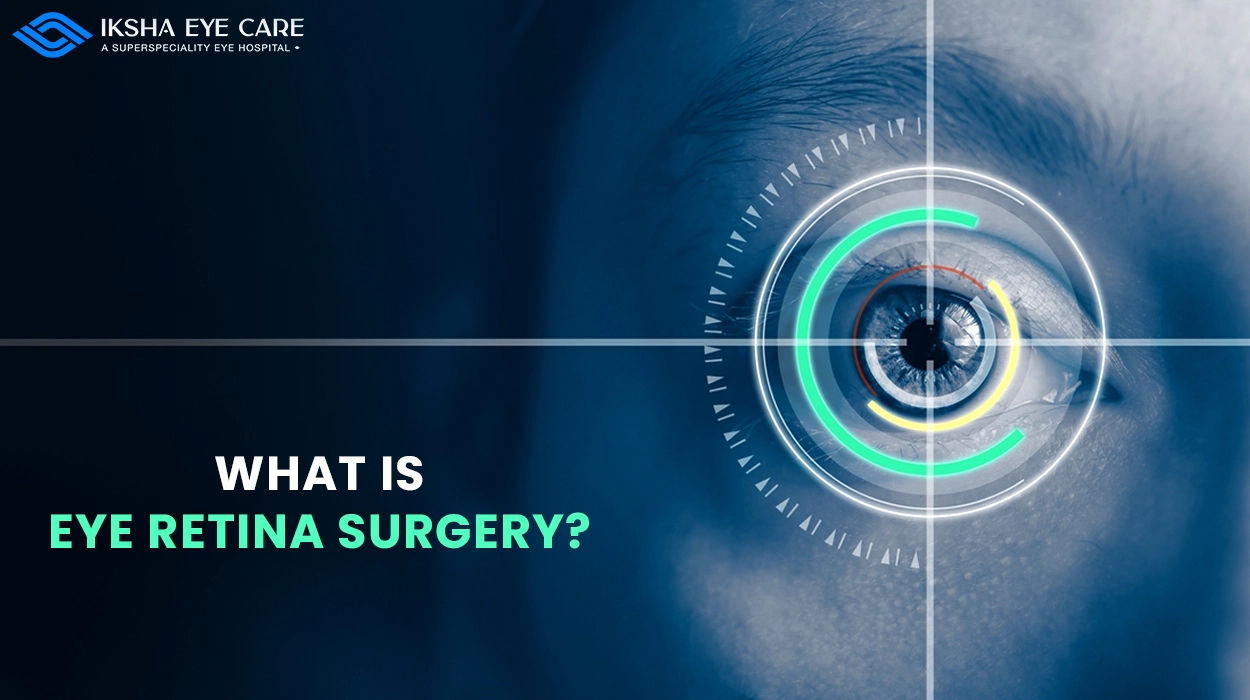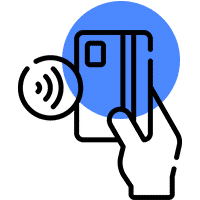Dreaming of clearer vision and a life free from glasses or contact lenses? Look no further than Iksha Eye Care, a leading super-speciality eye hospital in Andheri West and Santacruz West, Mumbai. We are proud to offer SMILE (Small Incision Lenticule Extraction) surgery, a revolutionary laser vision correction procedure designed to help you achieve clear vision and ditch the spectacles for good.
What is SMILE Surgery?
SMILE surgery is a minimally invasive, bladeless laser vision correction procedure that reshapes the cornea, the front surface of your eye, to correct refractive errors like nearsightedness (myopia), farsightedness (hyperopia), and astigmatism. Unlike traditional LASIK surgery, which creates a flap in the cornea using a blade, SMILE uses a femtosecond laser to create a lenticular, a tiny disc of corneal tissue, within the cornea. This lenticular is extracted through a small incision, allowing the cornea to reshape naturally and improve your vision.
Benefits of SMILE Surgery:
SMILE surgery offers several advantages over other laser vision correction procedures, making it a popular choice for individuals seeking clear vision and a comfortable experience. Here are some key benefits:
-Minimally invasive: SMILE uses a smaller incision than LASIK, leading to faster healing and reduced risk of complications.
-Bladeless: The femtosecond laser eliminates the need for a blade, offering greater precision and potentially reducing the risk of flap-related complications associated with LASIK.
–Faster visual recovery: Most patients experience significant vision improvement within 24 hours after SMILE surgery, with continued improvement over the following days.
-Reduced discomfort: SMILE is a comfortable procedure with minimal post-operative pain or discomfort due to the smaller incision and minimal disruption of corneal tissue.
-Suitable for a broader range of patients: SMILE may be ideal for individuals with thinner corneas who might not be good candidates for LASIK surgery.
Why Choose Iksha Eye Care for SMILE Surgery?
Iksha Eye Care is committed to providing patients with the latest advancements in eye care technology and expertise. We house a team of highly qualified and experienced ophthalmologists, including oculoplastic surgeons in Mumbai, skilled in performing SMILE surgery. Our commitment to personalised care ensures you receive a thorough pre-operative evaluation to determine if SMILE is the right option. We will discuss your specific needs and concerns, answer all your questions, and guide you through the entire process, from pre-operative evaluation to post-operative care.
Here’s what sets Iksha Eye Care apart:
State-of-the-art technology: We utilise the latest advancements in laser technology to ensure precise and safe SMILE procedures.
Experienced surgeons: Our team of ophthalmologists, including oculoplastic surgeons in Mumbai, possess extensive experience and expertise in performing SMILE surgery.
Personalised care: We prioritise individual needs and concerns, providing comprehensive consultations and customised treatment plans.
Comfortable and supportive environment: We offer a welcoming atmosphere and dedicated staff to ensure a comfortable and stress-free experience.
Ready to Smile Brighter?
If you are tired of relying on glasses or contact lenses and are considering laser vision correction, schedule a consultation with the experts at Iksha Eye Care. We will assess your needs and determine if SMILE surgery is the right choice. Take the first step towards a life of clear vision and freedom from glasses – contact Iksha Eye Care today!
Iksha Eye Care – Andheri West:
Address: 103-104, 1st floor, Heritage Plaza,
Above Canara Bank, Below DN Nagar Metro Station,
Beside Cosmos Plaza, Four Bungalows,
Andheri West, Mumbai 400053
Phone: +91-9321489919/ +91-9137474357/ 022-26360707
Iksha Eye Care – Santacruz West:
Address: 102, 1st floor, Suryoday building
Above SBI bank, Near P H Medical
Center, Juhu Tara road, Santacruz West, Mumbai 400054
Phone: 91-8591981919/ +91-9137125052/ 022-31778419
























